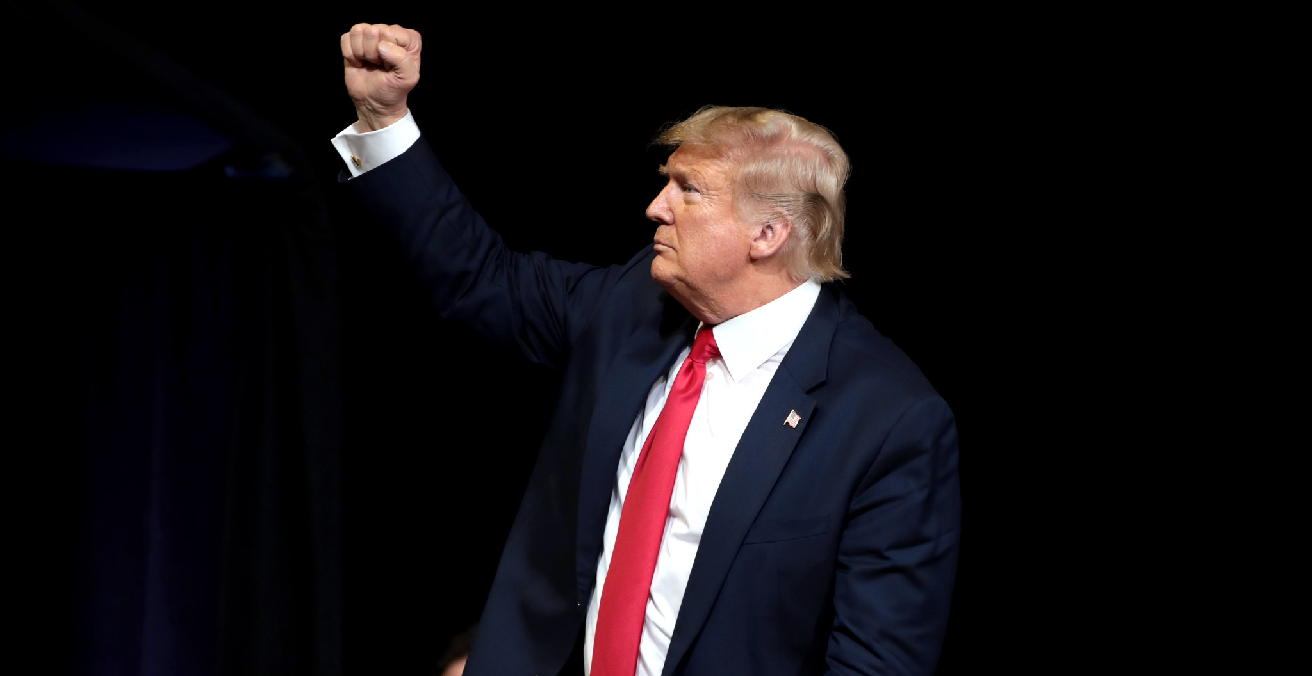The Hyper-Individualism of America’s “Principled Conservatives” Helped Create President Trump

“Never Trump” Republicans are hoping the inauguration of a Democratic president might spark a shift that brings “principled conservatism” back to the GOP. It is unlikely – their conservatism has been priming white working-class America for Trumpism for decades.
Republicans pre-Trump fermented a reductionist debate which argued public institutions like universal healthcare threatened the “American Dream.” This was a hyper-individualism sourced from explicit freedoms stated in America’s constitution and canonised by the Cold War fight against communism.
Unlike Australia’s minimalist constitution, which sets a framework for representative democratic government but does not assert many individual rights, America’s constitution is maximalist, or “rights based.” This means it makes grand claims about the American way of life by listing rights like the freedoms of speech and privacy and bearing arms. It had to, after all – America’s constitution was drawn up in an age of uncertainty, where fledgling democracies were fighting to distinguish themselves against fading absolutist “ancient regimes.”
Problematically, rights-based constitutions are inherently rigid and time-bound to the socio-cultural order of their creation. This has left less space for Americans to negotiate their national values and priorities. Subsequently, American conservatives have had little impetus to formulate a socio-cultural order worth conserving beyond that contained in the constitution’s rights-based individualism. Conservative hero Ronald Reagan described this Republican worldview in his inauguration speech of 1981, stating, “We are a united people pledged to maintaining a political system which guarantees individual liberty to a greater degree than any other.”
Undeniably, Reagan led an important correction against governmental excess. His tax cuts encouraged a new dynamism in the American economy at a time when future giants like Microsoft and Apple were emerging, creating jobs and driving living standards. These economic policies reflected the best of centre-right politics.
But with the fall of the Soviet Union, the limitations of a hyper-individualism sourced from a constitution written two centuries earlier began to emerge. While conservatives had flourished in the simple dichotomy of the Cold War, they’d done little to develop comprehensive priorities for domestic reform. To fill the void, George W. Bush quickly overstated the severity of a nascent Islamist threat, fruitlessly expending resources propelling regional conflicts in the Middle East while allowing authoritarian China to emerge unchecked. At home, conservatives turned reflexively to a deep suspicion of anything approximating public ownership in the economy.
On Barack Obama’s proposed public healthcare option, Republican Mitch McConnell claimed “it may cost you your life… If your particular malady doesn’t fit the government regulation, you don’t get the medication.” When the Supreme Court ruled that states could block much of the implementation of Obama’s Affordable Care Act, Republican governors prevented some 27 million Americans from gaining insurance – mostly in Deep South states that later helped the Republican Party fall to Trump.
Republican obstructionism also meant Obama became the first president since Reagan to not legislate an increase in the federal minimum wage, despite rapidly rising living expenses like rent and healthcare and surging house prices. For instance, the average American’s annual spending on out-of-pocket healthcare costs have doubled since 1984. As Obama’s frustrated labour secretary Tom Perez said in 2016, “The American people understand that seven and a quarter is not enough to live on, but the Republican leadership here in the Congress hasn’t got that memo.”
With China’s rise and its effect on America’s manufacturing base, the social damage wrought by Republican attacks on public institutions finally exploded. In the first two decades of the twentieth century, over 3.7 million US jobs had been lost through the haemorrhaging of labour to China. Corporate offshoring had replaced the creative destruction promised by trade liberalisation. Old manufacturing regions in the American Midwest and Deep South were stuck in a cycle of insecure service work and poverty. Political scientist Sean Tende read the tea leaves in 2012 when he wrote of Barack Obama’s re-election, “[It was] about a large group of white voters not showing up.”
By continuously opposing the development of public institutions like universal healthcare which build inclusion and mutual respect, “principled conservatives” had enflamed a melting-pot of hopelessness among rural communities affected by shifting labour markets. Midwestern white left-behinds didn’t have a humane minimum wage or affordable healthcare to turn to. Donald Trump, ever the opportunist, caught on. By elevating racial and nativist prejudices in 2016, Trump offered rural white voters a mirage of inclusion and security they could not find elsewhere.
America’s centre-right is now gripped by a nationalist populism that has flamed hate, incited an insurrection, encouraged racism, and weakened America’s international influence, all while delivering no economic dividend for rural left-behinds. One index which measures America’s manufacturing sector has dropped to its lowest level since 2009, despite Trump presenting as a champion for those communities in Washington. Its no surprise, given what studies show about populist politics – it may provide opportunities to win power, but it does little to advance the core centre-right objectives of stability and prosperity. One study shows how after 15 years, GDP per capita in studied populist nations was 15 percent lower compared to plausible non-populist counterfactuals.
The plight of GOP conservatism and its replacement by Trumpism is worth comparing to Australia’s centre-right, which practices a centrist conservatism and has enjoyed majority support at three consecutive elections. This is because Australian conservatives understand individual freedom is meaningless without individual empowerment. There is no point in freedom as an end in itself. Individualism is sustainable and constructive when society allows anyone with an industrious spirit to get ahead, not just those born with good health and successful parents.
Australian conservatives partly benefit from the fact that without a rights-based constitution, they have had to build a coherent liberal philosophy that is actually focused on improving people’s lives. This is the Hawke/Keating/Howard consensus that has built and expanded universal healthcare, subsidised affordable tertiary education, enforced a dignified minimum wage, and established a fully funded disability insurance scheme. What separates Australia’s centre-right from the centre-left is the knowledge that people are best able to pursue their aspirations in a state of independence, rather than dependence. This involves decentralising economic and political power so that individuals are not limited by special interests in big business, superannuation, unions, or elsewhere.
As we look back to America, we see a society decaying under mutual distrust. Trump’s left-behinds won’t accept the votes of their fellow Americans. COVID-19 spreads untamed while conservatives decry mask-wearing as a violation of personal liberty. Australia, by contrast, is free, most certainly, but also benefitting from a mutuality that has supported arguably the most effective COVID-19 response on Earth.
This truth won’t push Republicans back to the centre. Trump’s inheritors are already gathering at the gates. But it might warn Australian conservatives wrestling with the post-COVID-19 recession what hyper-individualism can do to propel populist forces and erode a mainstream centre-right constituency.
Tom Akhurst is studying honours in politics at the University of Melbourne. His thesis will explore how the People’s Republic of China is using civic applications of information technology to advance its expansionist foreign policy agenda.
This article is published under a Creative Commons License, and may be republished with attribution.





